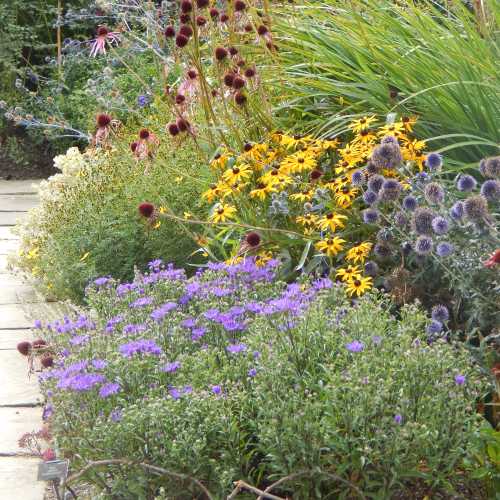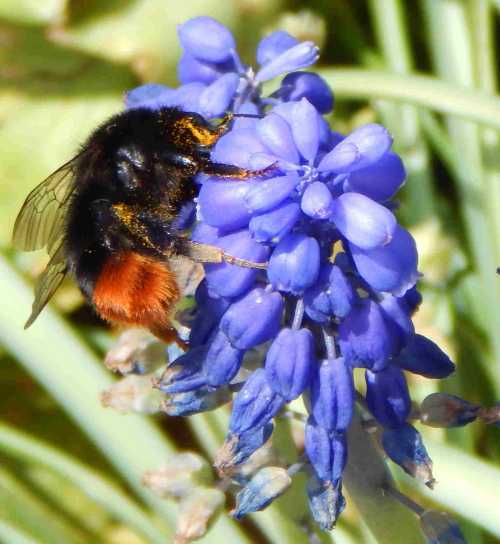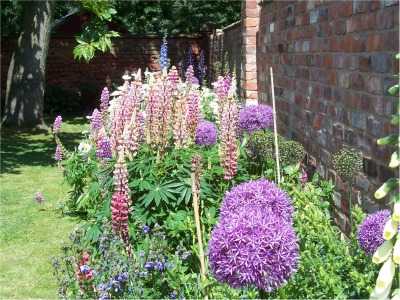Work With Nature In Your Garden To Attract Bees in Problem Places
There are plants that attract bees, even in difficult gardening conditions.
And
certainly, it has to be said, some people really do have gardens which represent a real challenge! Clay soil, drought and shade (not to mention combinations of any of
these) may seem like impossible gardening scenarios – yet even here it
is possible to accommodate a few plants that attract bees.
Rather than attempting to ‘solve a problem’ by changing your conditions, I tend to think it is better to work with nature. If nature can create certain conditions of soil, weather or light, it will have created life that can thrive in that habitat.
Hence, the natural landscape can help to guide us into making wise choices. A walk or drive around your local area, or a visit to an area with similar growing conditions, could help you choose the right flowers, bulbs, shrubs and trees. Specialist books are also available.
Why not take a look at these links about gardening in problem places, according to which best describes your situation:
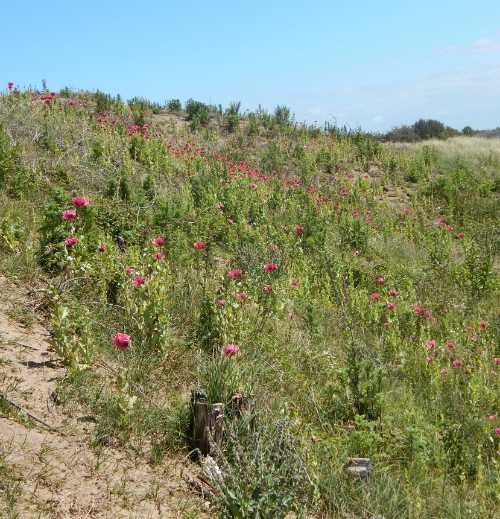 A dry, sandy coastal zone a few miles from me - the area is home to beautiful oriental poppies, scented Rosa rugosa, golden rod, evening primrose, sea holly and more.
A dry, sandy coastal zone a few miles from me - the area is home to beautiful oriental poppies, scented Rosa rugosa, golden rod, evening primrose, sea holly and more.Shade Garden
Shade can present its challenges, but looking to nature, we can find inspiration. Here you'll find some shade gardening ideas that include planting for bees and pollinators.
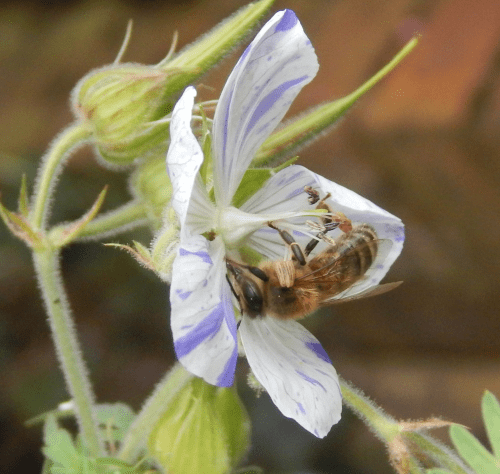 Honey bee - Apis mellifera foraging on variegated geranium flower.
Honey bee - Apis mellifera foraging on variegated geranium flower.Drought Plants
Many herbs, wildflowers, succulents and other garden plants will thrive in drought areas. Take a look at these great drought plants that attract not only bees but also other pollinators. Oh, and a drought garden does not need to be boring!
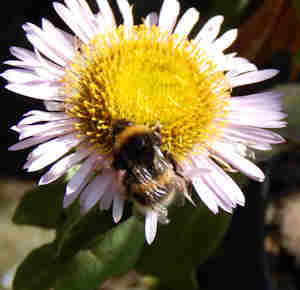 Above: Bumblebee foraging on Beach Aster. Beach aster can thrive in a range of conditions, including dry, sandy soil, and can tolerate exposed, coastal sites.
Above: Bumblebee foraging on Beach Aster. Beach aster can thrive in a range of conditions, including dry, sandy soil, and can tolerate exposed, coastal sites.Clay Soil
I once had a garden that had clay soil. Clay soil can be very challenging and a lot of hard work, but even here you may be able to grow plants for pollinators!
A good tip is to think about including plants that are happy to grow along a water's edge or in a pond, but that are adaptable to being planted directly into soil. For example, hostas like to keep their roots damp - they'll even grow on a water's edge. Bumble bees like to forage on hosta flowers.
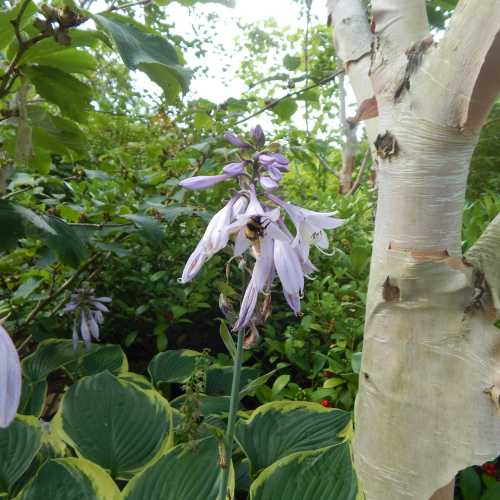 Hostas like to keep their roots damp - they'll even grow on a water's edge. Bumble bees like to forage on hosta flowers.
Hostas like to keep their roots damp - they'll even grow on a water's edge. Bumble bees like to forage on hosta flowers.
A number of plants are surprisingly versatile.
FREE PDF DOWNLOAD:
Planning And Planting A Bee Friendly Garden
If you found this page helpful or interesting, I'd really be grateful if you would share it with others - if not this page, perhaps another, such as Gardening For Bees.
Thank you so much :) .
